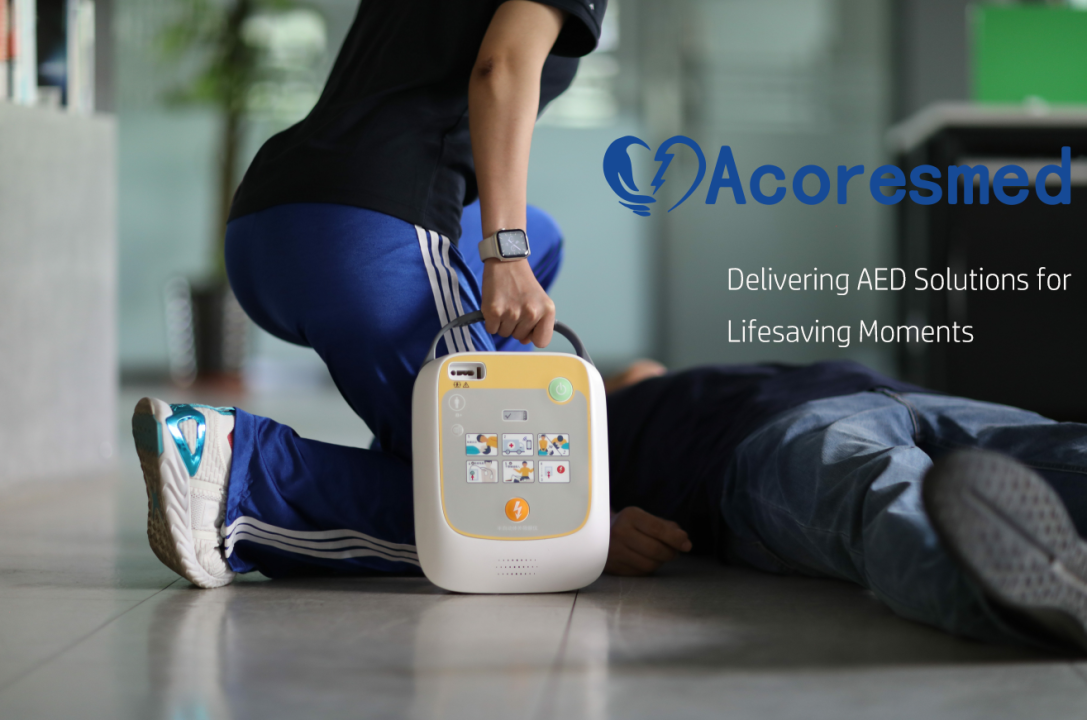
Understanding the Golden 4 Minutes: The Crucial Role of CPR and AED in Saving Lives
The Urgency of SCA Response
Sudden Cardiac Arrest (SCA) presents an urgent medical challenge that demands immediate action. Statistics reveal a startling reality: In cases of SCA, each minute without CPR and defibrillation reduces the chances of survival by 7-10%. This emphasizes the critical nature of the "Golden Four Minutes," the window where prompt intervention is most effective.
Globally, SCA is a leading cause of death, claiming more lives annually than lung cancer, breast cancer, and HIV/AIDS combined. In the United States alone, approximately 350,000 individuals are affected by SCA each year.
SCA can strike anyone, anywhere, without warning, causing the heart to stop beating effectively. In such scenarios, time is the most crucial factor. The average ambulance response time, especially in urban areas, can range from 8 to 12 minutes, and even longer in rural settings. This delay significantly diminishes the survival prospects of the victim.

Importance of the Golden 4 Minutes
The concept of the "Golden 4 Minutes" is pivotal in cardiac emergencies, particularly during sudden cardiac arrest. This term refers to the first four minutes after a cardiac arrest, where immediate and effective intervention is crucial for the victim's survival. Despite the importance of timely ambulance arrival, there can be delays, making the role of bystanders with access to Automated External Defibrillators (AEDs) and the knowledge of high-quality CPR vital.
Brain Oxygenation: During cardiac arrest, the heart ceases to pump blood, halting oxygen supply to the brain. Immediate action within the Golden 4 Minutes is essential to prevent irreversible brain damage. Without rapid intervention, brain cells begin to die within 4-6 minutes after the heart stops.
Survival Rates: Without CPR and defibrillation, the survival rate drops by about 10% per minute. Early defibrillation, within the first 3-5 minutes, can lead to over a 50% survival rate.
Community Response: Often, the critical four minutes elapse before professional help arrives, making the response of bystanders or community members crucial. Less than 5% of SCA victims survive in locations without public access to defibrillation.

CPR: The First Line of Defense
Cardiopulmonary Resuscitation (CPR) is a lifesaving technique crucial in the early minutes of SCA. Immediate and high-quality CPR helps maintain blood flow to vital organs, extending the window for effective defibrillation. High-quality CPR increases the survival rate by two to three times and it involves:
Adequate Depth: Ensuring chest compressions are at least 2 inches deep.
Proper Rate: Maintaining a compression rate of 100-120 compressions per minute.
Allow Full Recoil: Letting the chest fully return to its normal position between compressions.
Minimize Interruptions: Reducing pauses in chest compressions to the least amount possible.
Avoid Excessive Ventilation: Being cautious not to provide too many breaths or breaths that are too forceful.
The Role of AEDs in SCA Scenarios
Automated External Defibrillators (AEDs) are invaluable for prompt defibrillation. These devices analyze the heart's rhythm and, if necessary, deliver an electric shock to help the heart re-establish an effective rhythm. Their presence in public spaces like airports and schools can bridge the delay in professional medical help, significantly increasing survival rates. The chances of survival can increase from less than 10% to over 40% with the use of AEDs.
Increasing AED accessibility in public spaces could save up to 40,000 lives annually in the U.S. alone. More importantly, AEDs are designed for easy use, featuring simple instructions and voice prompts, enabling bystanders to become immediate responders.

What Makes a Great AED?
A great AED isn't just a piece of equipment; it's a lifeline. It stands out due to its ease of use, reliability, effective defibrillation, and advanced technology. Here are the essential features that make an AED truly great:
User-Friendly Design : An AED must be straightforward, catering to people without medical training. This includes clear instructions and intuitive controls, making it accessible in urgent situations.
Reliability : Dependability is key. The AED must perform accurately and consistently, ensuring it's ready whenever an emergency strikes.
Rapid Shock Delivery : Speed is crucial. Quick analysis of heart rhythms and prompt shock delivery are vital for effective treatment in critical moments.
Regular Self-Tests : Built-in self-checking mechanisms are essential to ensure the AED is operational and ready at a moment's notice, maintaining its readiness at all times.
Clear Instructions : Voice prompts are a lifesaver, guiding the user step-by-step, especially crucial in high-stress or noisy environments.

Strategies for Maximizing Emergency Response Effectiveness
Public Education and Training: Increasing awareness and training in CPR and AED use is essential. This knowledge empowers bystanders to become effective immediate responders. Regular workshops, community programs, and online courses can significantly enhance public readiness.
Accessibility of AEDs: Ensuring AEDs are available in public places enhances emergency preparedness. Placement in high-traffic areas like shopping malls, airports, and sports facilities, along with clear signage, can make a critical difference in response times.
Emergency Preparedness in Institutions: Encouraging institutions and businesses to develop emergency response plans, including CPR training for staff and strategic placement of AEDs, is vital. Regular drills and collaborations with local health authorities can further strengthen their readiness.

Our Commitment to Saving Lives
At Acoresmed, we understand the gravity of SCA and are committed to equipping society with the knowledge and tools to respond effectively. Our AEDs are technologically advanced, reliable, and user-friendly, all for saving lives!
Please share this post to spread awareness about the importance of CPR, prompt defibrillation and AEDs in managing SCA. Your support can make a significant difference in our community. Together, let's create a safer environment for everyone.
For more information on how you can be a part of this life-saving initiative, please contact us. Your involvement can lead to a significant positive impact.

Acoresmed Co., Ltd
Email: sarah@acoresmed.com
WhatsApp: +86 15626978194
Facebook: https://www.facebook.com/acoresmed/